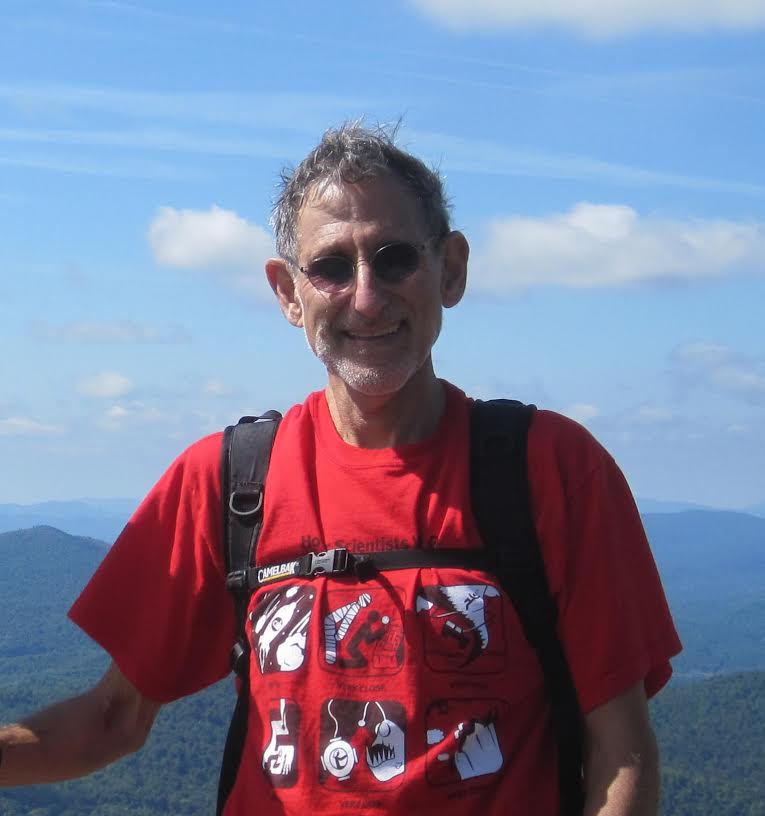Podcast: Play in new window | Download
Subscribe: Apple Podcasts | RSS
Dr. Herbert Geller is a Senior Investigator in the Developmental Neurobiology Section and Head of the Office of Education at the National Heart, Lung, and Blood Institute of the National Institutes of Health. He received his PhD in Biomedical Engineering from Case Western Reserve University and conducted postdoctoral research afterward at the University of Rochester School of Medicine and Dentistry. Herbert served on the faculty at the Robert Wood Johnson Medical School for over 30 years before joining the NIH. He is a member of the Society for Neuroscience and the American Association for the Advancement of Science, and he is here with us today to tell us all about his journey through life and science.
People Behind the Science Podcast Show Notes
Life Outside of Science
When he’s not busy in the lab, Herbert stays active with running, skiing, and gardening. We also discovered that he is quite handy and has been hard at work repairing and restoring his old house.
The Scientific Side
The Geller lab investigates why people don’t recover from central nervous system injuries including spinal cord injuries. They are working on developing potential treatments that will help people recover function after spinal cord injury, particularly focusing on how to inhibit the stop signals in the brain that prevent cells from regenerating after injury.
A Dose of Motivation
If you’re not falling, you’re not trying hard enough. Also, don’t waste your emotional energy on things you can’t control.
What Got You Hooked on Science?
Herbert has always been interested in how things worked, and this is what originally motivated him to go to school for engineering. His fascination with research started after working for a summer in the Rockefeller University electronics lab as an undergraduate. First-hand exposure to the impressive visual system research of Keffer Hartline (who would later be awarded the Nobel Prize!) was a big inspiration.
The Low Points: Failures and Challenges
There was a specific technique that Herbert wanted to learn during his sabbatical, and he selected a great lab to work with where he was sure he could get the skills he sought. When he got there, the lab had moved on and they were no longer interested in that particular technique. He was distressed at his predicament, but a discussion with the lab leader led him down a completely different path that has enabled him to make the exciting discoveries their group is making today!
A Shining Success!
Herbert and his colleagues have discovered an enzyme that appears to inhibit the stop signals that prevent neuron regeneration. This is particularly exciting because it is already an approved drug for use in people for other purposes. With enough preliminary evidence, their discovery could move straight into use in people and really have an impact on people’s lives!
Book Recommendations
Catch 22 by Joseph Heller, any book by Primo Levi, any book by Robertson Davies, any book by Jonathan Safran Foer
Most Treasured Travel
Two locations really left a lasting impression on Herbert since he was able to spend a fair amount of time in each. He spent a sabbatical in London and really enjoyed science and culture. In particular, he has fond memories of the phenomenal theater scene there. He also was in Japan for a while doing research. The culture and the energy of the people and the cities there were memorable.
Quirky Traditions and Funny Memories
Herbert likes to incorporate food into his lab culture, making sure to always keep snacks handy at lab meeting because he believes a hungry researcher is not a happy researcher. There is a big jar of jelly beans in his office as well and lab members can always visit for a sweet snack
Advice For Us All
Don’t follow the crowd.
Guest Bio
Herbert is interested in fostering the career development of young scientists as well as promoting recovery of function following brain and spinal cord injuries. At present, there are no approved therapies for treating spinal cord injuries, which produce damage to axons that transmit information to and from the brain. These damaged axons do not regrow, due to the absence of signals that promote growth and the presence of other molecules that actively impede growth. His research demonstrated that a class of molecules in the extracellular matrix, called chondroitin sulfate proteoglycans, have a major role in impeding growth, and that these actions can be attributed to the sulfated chondroitin sugars attached to the protein core of the molecule. His group was the first to identify a novel sulfation motif within chondroitin sulfate and has developed a potential therapy for spinal cord injury using a drug that specifically targets this motif. More recently, his group participated in the identification of novel neuronal receptors for proteoglycans.
This episode was originally published on January 21, 2015.

Leave a Reply